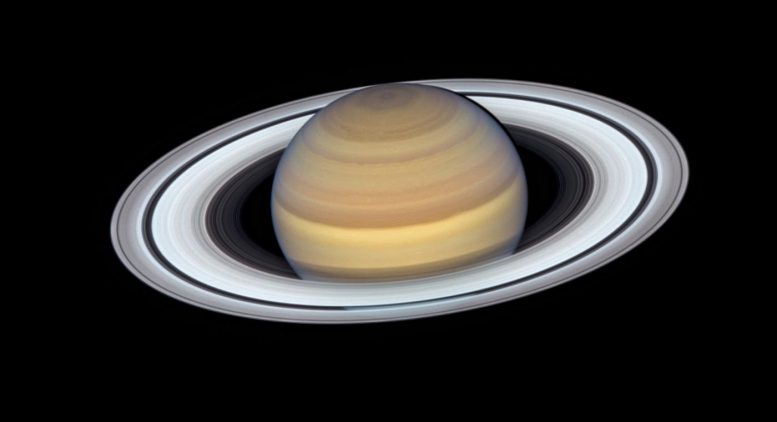
The latest view of Saturn from NASA’s Hubble Space Telescope captures exquisite details of the ring system — which looks like a phonograph record with grooves that represent detailed structure within the rings — and atmospheric details that once could only be captured by spacecraft visiting the distant world. Hubble’s Wide Field Camera 3 observed Saturn on June 20, 2019, as the planet made its closest approach to Earth, at about 845 million miles away. Credit: NASA, ESA, A. Simon (GSFC), M.H. Wong (University of California, Berkeley) and the OPAL Team
What Is Saturn?
Saturn is the sixth planet from the Sun. It is a gas giant, and the second largest and second most massive planet in our Solar System. It is famous for the ring-like structures that circle its equator.
Saturn is one of the two gas giants in the Solar System, the other being Jupiter. It is 95 times more massive than Earth, and its radius is an extraordinary nine times greater than Earth’s. With its hugely inflated atmosphere, it is much less dense than Jupiter. In fact, because Saturn has an average density less than that of water, Saturn would actually be able to float (were there a bath big enough). Saturn is the sixth planet in our Solar System, making it the neighbor of Jupiter and Uranus.
Saturn is the sixth planet from the Sun. It is a gas giant, and the second largest and second most massive planet in our Solar System. It is famous for the ring-like structures that circle its equator. Credit: NASA & ESA
Like Jupiter, Saturn probably has a rocky core, surrounded by metallic hydrogen, and liquid hydrogen and helium. The majority of its radius consists of its gaseous atmosphere. Its distinctive yellow tint is due to ammonia crystals in its upper atmosphere. Saturn is famous for its extremely recognizable ring system. The rings are made up of ice, debris and dust. It is not known how the rings formed, although it is theorized that they are either leftover material from the formation of Saturn itself, or otherwise the detritus left behind by a destroyed Saturnian moon. Saturn’s largest moon, Titan, is the second largest in the Solar System, and is the only moon that is known to have a significant atmosphere.
Since the Hubble Space Telescope was launched, its goal has been to study not only distant astronomical objects, but also the planets within our Solar System. Hubble’s high-resolution images of our planetary neighbours can only be surpassed by pictures taken from spacecraft that actually visit these bodies. However, Hubble has one advantage over space probes: it can look at these objects periodically and observe them over much longer periods than any passing probe could.
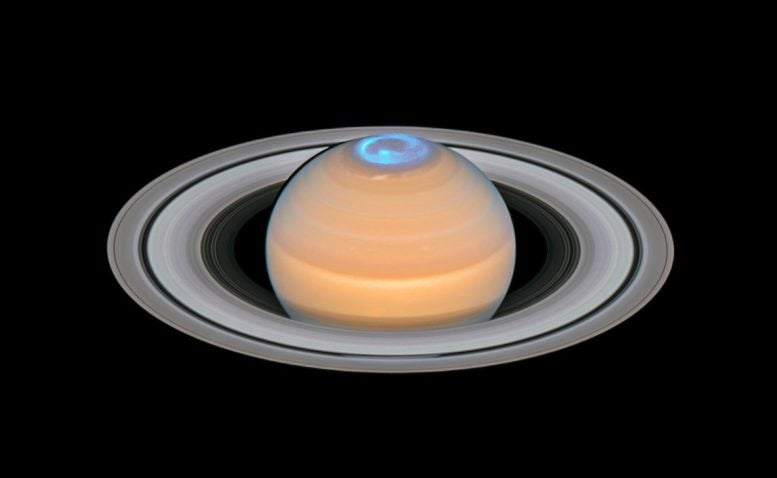
This image is a composite of observations made of Saturn in early 2018 in the optical and of the auroras on Saturn’s north pole region, made in 2017. In contrast to the auroras on Earth the auroras on Saturn are mainly visible in the ultraviolet — a part of the electromagnetic spectrum blocked by Earth’s atmosphere — and therefore astronomers have to rely on space telescopes like the NASA/ESA Hubble Space Telescope to study them. Credit: ESA/Hubble, NASA, A. Simon (GSFC) and the OPAL Team, J. DePasquale (STScI), L. Lamy (Observatoire de Paris)
Hubble has captured astonishing images of Saturn’s auroras (see image above) in ultraviolet light, revealing auroral curtains of light that encircle Saturn’s north and south poles that rise more than a thousand miles above the cloudtops.
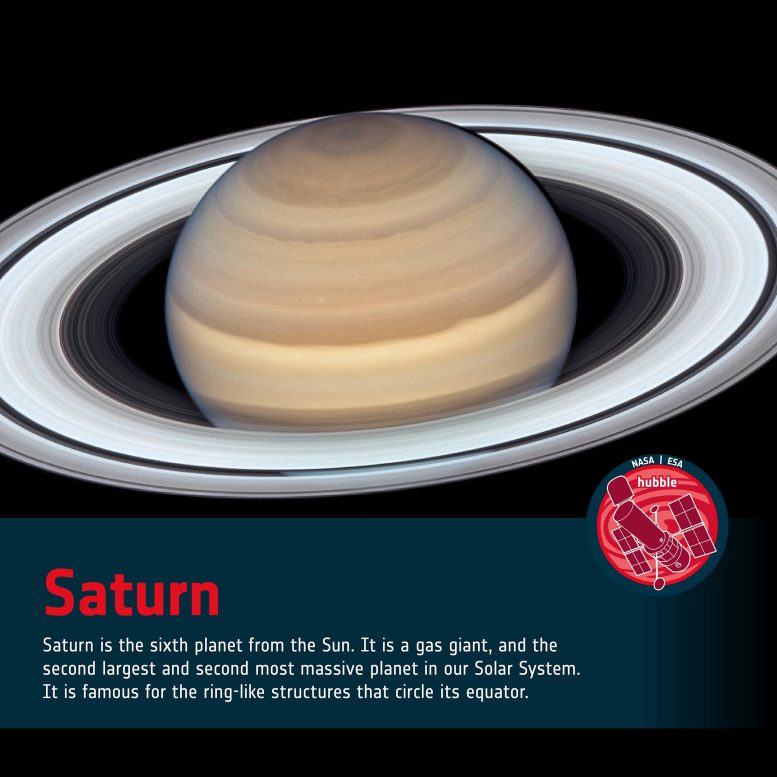
Credit: ESA/Hubble, NASA, ESA, A. Simon (Goddard Space Flight Center), and M.H. Wong (University of California, Berkeley)
When Saturn is tilted towards Earth, the planet gives Hubble a magnificent view of its bright icy structure. Hubble can resolve numerous ringlets and the fainter inner rings. Hubble can also observe changes taking place on the planet, including dynamic weather patterns. For example, a large storm observed in the north polar region in 2018 (see image below) had disappeared in Hubble’s 2019 observations of Saturn. The telescope is also well equipped to capture the planet’s amber colors, which come from summer smog-like hazes, produced by photochemical reactions driven by solar ultraviolet radiation, and the planet’s banded structure, which is caused by the winds and clouds at different altitudes.
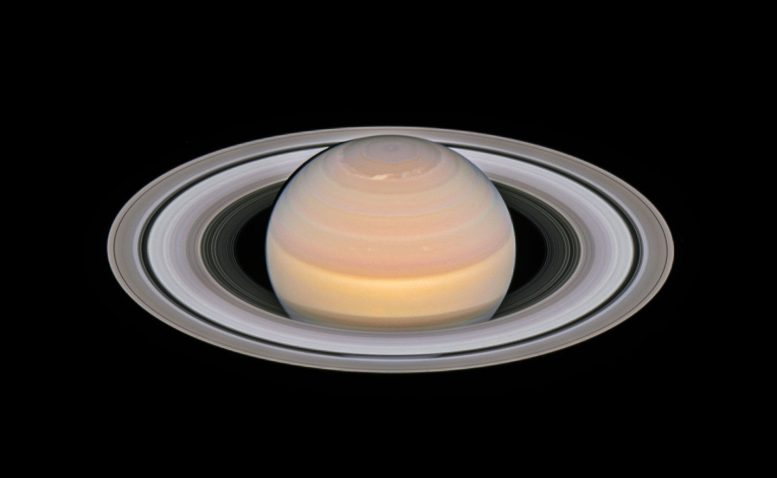
The NASA/ESA Hubble Space Telescope was used to observe the planet on June 6, 2018, when Saturn was approximately 1.4 billion kilometers from Earth. Visible in this Hubble image are the classic rings as recorded by the very first astronomers to observe the planet with telescopes. From the outside in are the A ring with the Encke Gap, the Cassini Division, the B ring, and the C ring with the Maxwell Gap. Credit: NASA, ESA, A. Simon (GSFC) and the OPAL Team, and J. DePasquale (STScI)
Hubble’s collection of Saturn images can be explored here.

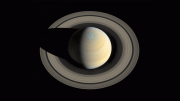
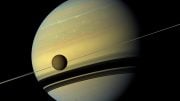

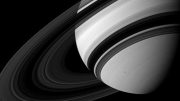
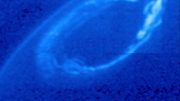
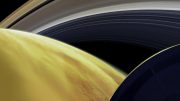
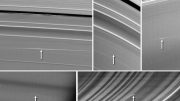
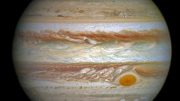
Be the first to comment on "Astronomy & Astrophysics 101: Saturn"